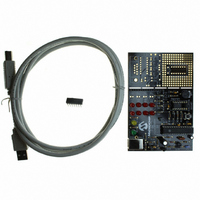DV164101 Microchip Technology, DV164101 Datasheet - Page 67

DV164101
Manufacturer Part Number
DV164101
Description
KIT DEV PICKIT1 FLASH 8/14PIN
Manufacturer
Microchip Technology
Series
PICkit™ 1r
Type
MCUr
Specifications of DV164101
Contents
PIC Kit 1 Circuit Board, CD-ROMs, USB Interface Cable and Booklet
Processor To Be Evaluated
PIC12F675
Interface Type
USB
Silicon Manufacturer
Microchip
Core Architecture
PIC
Core Sub-architecture
PIC12, PIC16
Silicon Core Number
PIC12F, PIC16F
Silicon Family Name
PIC12F6xx, PIC16F6xx
Rohs Compliant
NA
Lead Free Status / RoHS Status
Lead free / RoHS Compliant
For Use With/related Products
Microchip's 8-14 Pin FLASH Microcontrollers
For Use With
AC164122 - BOARD DAUGHT PICTAIL SD/MMC CARDAC164120 - BOARD SIGNAL ANALYSIS PICKIT
Lead Free Status / Rohs Status
Lead free / RoHS Compliant
Other names
DV164101R
DV164101R
DV164101R
Available stocks
Company
Part Number
Manufacturer
Quantity
Price
Company:
Part Number:
DV164101
Manufacturer:
Microchip Technology
Quantity:
135
C.8
2004 Microchip Technology Inc.
LESSON 6 – DATA EE LOOK-UP ROUTINES
C.8.1
Lesson 5 discussed storing and retrieving constants from program memory. The benefit
of storing information in non-volatile program memory is when power is cycled to the
microcontroller, the information is not lost. However, the main disadvantage is informa-
tion stored in program memory can not change. RAM, on the other hand, offers the
versatility of change, but is volatile (it is cleared when power is cycled to the
microcontroller.) Data EEPROM solves this problem by providing non-volatile
readable/writable memory. An added benefit of data EEPROM is a developer can free
up valuable RAM by using data memory to store rarely accessed variables. This lesson
covers the following topics:
• How to implement data EEPROM look-up routines
• Why data EEPROM look-up routines are useful
C.8.2
The PIC12F629/675 (DS41190) and PIC16F630/676 (DS40039) data sheets provide
detailed instructions on how to access data memory. See the data sheets for timing
specifications and limitations to the data memory. The data sheets are located on this
CD and the Microchip web site (www.microchip.com).
The steps for reading the data EEPROM are as follows:
1. Write the data memory location to the EEADR register.
2. Set EEPROM control bit RD (EECON1<0>).
All data memory locations can be accessed using a single routine when an index
variable is utilized. Example C-4 shows how to use an index variable to read the data
memory.
EXAMPLE C-4:
As discussed in Lesson 5, the returned value corresponds to an LED sequence. This
value is displayed using the Timer0 interrupt. The LEDs are multiplexed fast enough to
appear as though more than one LED is on at the same time. When SW1 is pressed,
an interrupt-on-change is generated and the next LED sequence is read from the data
memory. Figure C-15 shows the flowchart for this lesson.
LookupDEE
movf
banksel
movwf
bsf
movf
return
Introduction
Design
INDEX VARIABLE
index,w
EEADR
EEADR
EECON1,RD
EEDATA,w
; move data memory address pointer
;
; read data
; return with LED sequence in w
to EEADR
DS40051D-page 63












